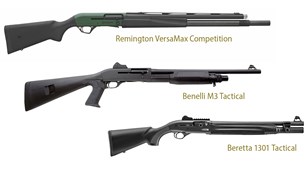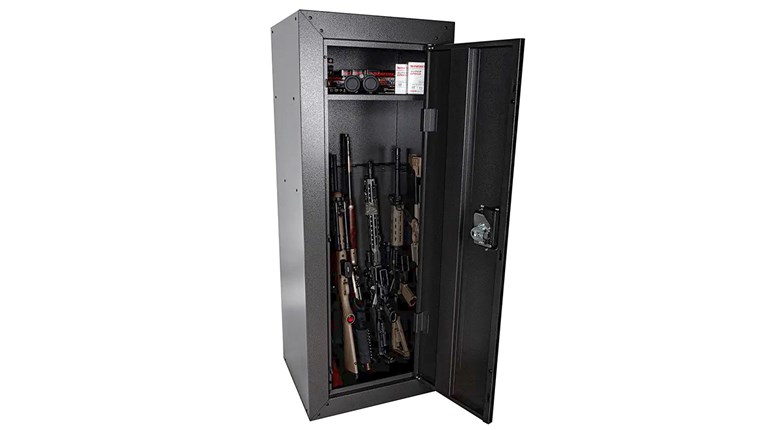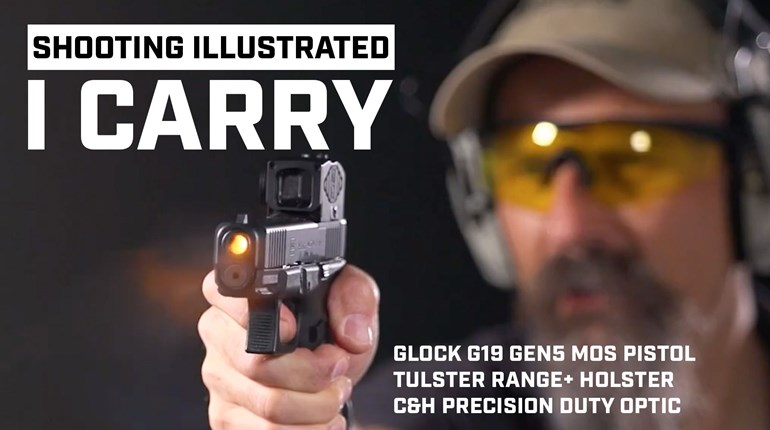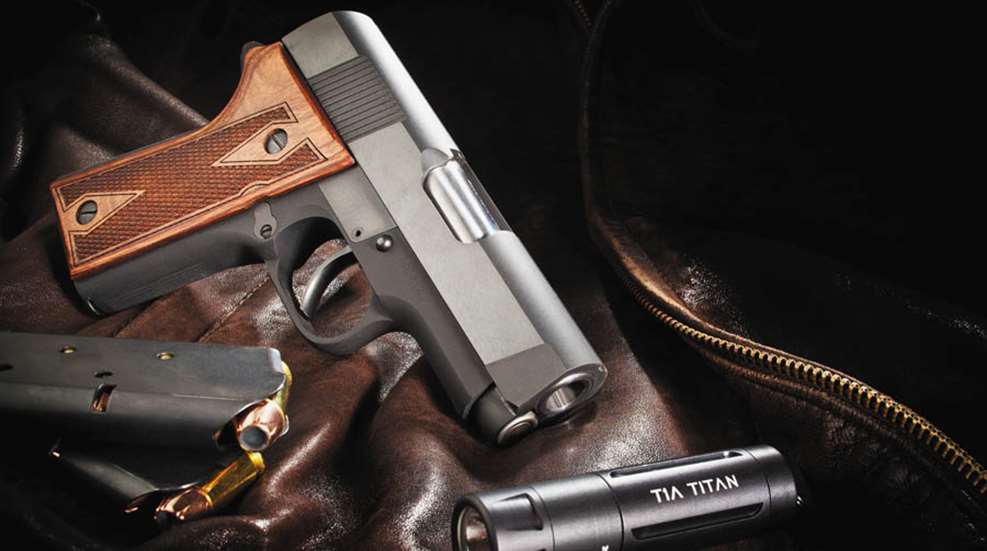
About the time shooters started carrying pistols, they began figuring out ways to make their iron more concealable and efficient by cutting them down and knocking off sharp edges. The objective was to produce a handgun that could be brought into action quickly, especially at very close range where time was of the essence. Those who figured this out went on to triumph over their adversaries. Those who didn't likely saw their careers come to an early demise.
John Wesley Hardin is often cited as the fastest Old West quick-draw artist, but when confronted by Texas Rangers while seated on a train near Pensacola, FL, Hardin's speed failed him when his concealed pistol hung up on his suspenders.
Years later, in the 1930s and '40s, experts began cutting down barrels and making other speed modifications to large-frame revolvers in.45 Colt and .44 Spl, creating what would come to be called belly guns. A belly gun is generally understood to be a pistol with fight-stopping power, capable of being brought into action quickly at short range. The fight might be toe-to-toe, so the pistol could be shoved into the belly of the adversary and fired. In essence, a belly gun is a large-caliber pistol, absent sharp edges and other protuberances, that can be fired quickly at close range.
The New Agent
With the introduction of a new variant of the New Agent from Colt, we now have a modern belly gun designed for the 21st Century—a cut-down, double-action, de-horned .45 ACP version of the greatest fighting pistol of all time, John Moses Browning's 1911.
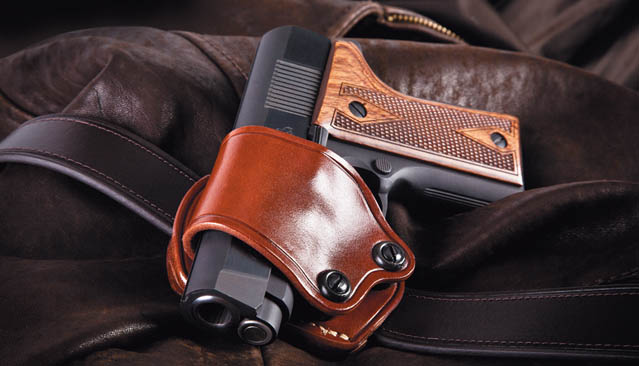
The New Agent sports a 3-inch coned barrel without a barrel bushing, a lightweight matte-blue aluminum frame, blued-steel slide and it weighs less than 25 ounces empty. The frame size and the accompanying seven-round magazines would suggest it is based upon the Officer's model. Though the trigger is double-action, what strikes you when first examining this pistol is some normal 1911 parts appear to be missing.
There is no grip safety, no thumb safety and perhaps most shocking, there are no sights, at least not in the traditional sense. Instead, a groove runs the length of the slide—Colt calls this a trench sight, but more on that later.
Since the New Agent uses a double-action trigger design and a Series 80 firing pin safety, there is no need for the traditional 1911 grip and thumb safeties. At first glance the grip frame appears to be solid, but closer examination reveals a one-piece mainspring housing that runs from the butt up to the backstrap, somewhat in the manner of the one-piece "Answer" from Novak's. The Colt design does not incorporate a beavertail and is made of a polymer material, no doubt to reduce weight.
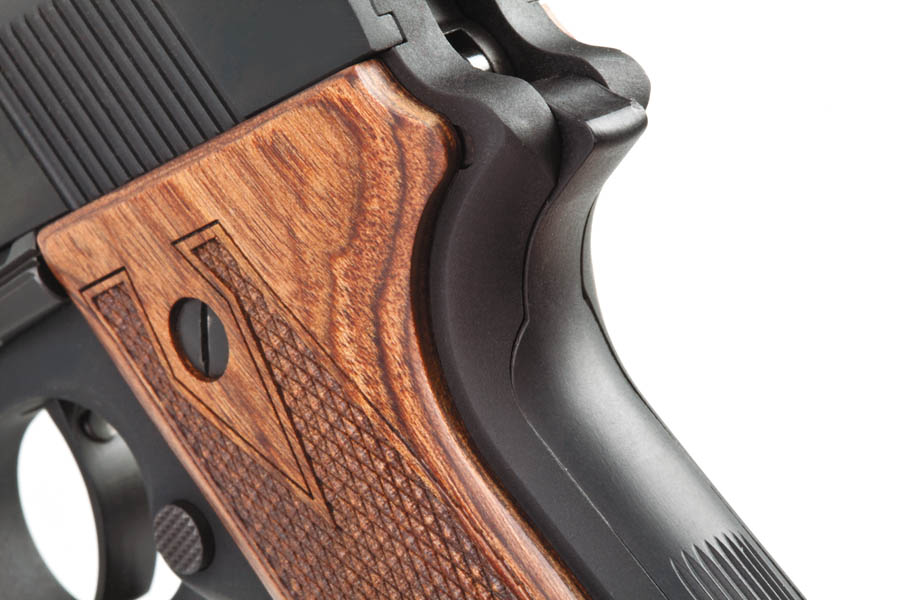
In appearance, it looks somewhat like a standard 1911 with a tang grip safety. As there is no thumb safety, it is not necessary to shoot with a high hold to keep the thumb atop the safety, and since the hammer is flush with the rear of the slide, there is little danger of having the web of the firing hand chewed up, so a beavertail was omitted. Colt added a surprise at the bottom of the mainspring housing—a hole at the base reveals the mainspring housing pin. Presumably, this access allows the pin to double as an anchor for a lanyard.
Field stripping the New Agent is easily accomplished by anyone familiar with the 1911. After making sure the pistol is unloaded, the slide is retracted and the slide stop is pushed out from the right and removed. The slide can then be eased forward and removed from the frame. Colt's New Agent uses a captive dual recoil spring, which is then lifted up from the rear so the barrel can be removed normally from the front of the slide.
Its grips are double-diamond checkered in the traditional 1911 pattern, but they feature an extended portion to the rear. Another missing part from the New Agent is the plunger tube on the left side of the frame. Instead, a plunger is cleverly located in front of the left-hand grip panel for the slidestop to bear upon. Removing the right grip reveals the double-action trigger bar and a trigger spring. The New Agent's grips and the arrangement of its internal parts are reminiscent of an earlier double-action design, the Colt Double Eagle. My memory is not good enough to say whether the double-action design of the New Agent is similar to the Double Eagle, but I can say, from my experience with the Double Eagle, further disassembly of the New Agent is not recommended.
Double-Action Trigger
If you are accomplished at handling the double-action triggers on revolvers or so-called double-action-only (DAO) pistols, the trigger on the New Agent is manageable. After taking up a bit of slack, the trigger simply pivots straight back until the sear releases and the hammer goes forward. Remarkably, unlike most double-action triggers, the New Agent trigger feels the same all the way through its travel. By that I mean it doesn't stack, get heavier or lighter—the 12.1 pounds of pressure required feels the same from start to finish. Being a double-action trigger there is no reset, but a distinctive click can be felt if the trigger is eased fully forward.
I tried to produce tight groups during testing, but I quickly discovered I was unable to work the trigger well during slow, deliberate fire; at least without pulling the shots off my point of aim.
Then again, would you shoot a belly gun slowly in a toe-to-toe gunfight? I think not. Getting into what I deem to be the purpose of this little pistol, I began shooting it with a quick pull all the way through the trigger travel and discovered it rewarded me with rapid singles and pairs, fired with one hand and with a two-handed hold.
Hits were fast and "combat accurate." Using this method I was able to shoot fast hammers at 3 and 5 yards and controlled pairs at 7 and 10. Lesson learned: This little .45 likes to have the trigger operated quickly.
What About Sights?
Well, there aren't any sights, and that is why this pistol is so slick. It lacks parts that hang up in a pocket, holster or, heaven forbid, suspenders. The trench sight running down the top of the slide gives a relative idea of alignment, but won't be used at belly-gun distances. At any distance much beyond arm's reach, the fastest way to hit with this pistol is by indexing. This involves bringing the pistol up to, or just below, eye level and using the back of the shooting hand and the back of the slide as a reference to alignment. Just as we use the front sight on pistols so equipped to confirm alignment, when indexing we use what we can see of the hand and the pistol to confirm where we are pointing. When you see the back of the slide in the center of the threat, quickly pull the trigger. Repeat as necessary. Indexing, combined with a quick pull through the trigger, I was able to get good center hits out to 10 yards, what I would think is maximum belly gun range.
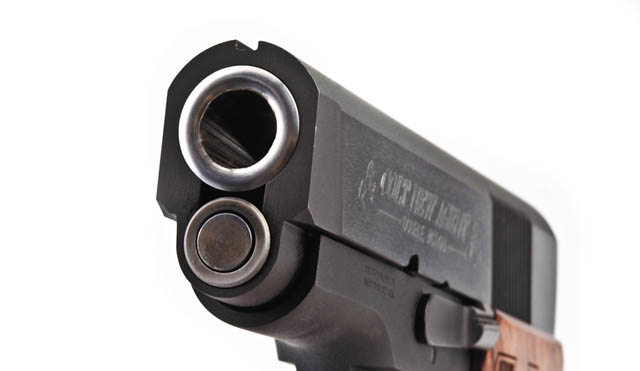
One other recommendation: grip this pistol firmly. Recoil isn't objectionable, but you need a strong grip to stay on target through that long trigger arc.
Most of my shooting with the New Agent was with 230-grain FMJ military ball ammunition. It functioned perfectly during testing. I tried a couple of magazines each of Federal and Winchester 230-grain hollow points and experienced no problems with feeding. The same was true with Remington 185-grain JHPs and, surprisingly, Federal 185-grain JHPs. In my experience, many pistols refuse to reliably feed the "flying ashtray" Federal hollow point, but the New Agent digested these rounds without objection.
Final Impressions
The pistol I tested is a prototype and was hand-delivered to me by a Colt executive at the behest of company CEO Lt. Gen. Bill Keys. I'm told it is only the second pistol of this series that has yet left the factory. If it were mine, I would look at doing a few things.
First, I would want to learn how to take it apart. This wouldn't be necessary for everyone buying a New Agent, but it's something a 1911 person like me would want to know. Second, I would send it off to my friend Charlie Pulit at Novak's to see if he could improve the trigger. It's OK the way it is, but I don't think I have a single handgun without a tweaked trigger and I couldn't resist seeing if it could be improved. I suspect, as this pistol catches on, aftermarket folks will come up with replacement spring kits. Third, I just might paint the rear of the slide white or bright orange—to make the back end of the pistol a really big rear "sight" for indexing.
While it may appear somewhat lacking at first glance, once you handle Colt's New Agent it doesn't take long to realize it's a well designed, modern-day take on the classic belly gun.










